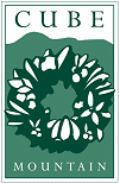Evergreens
Photos, descriptions and close-up photos of more than a dozen evergreens and cones commonly used (or not used) in making wreaths and Christmas decorations. Click on photos to enlarge.
Balsam Fir
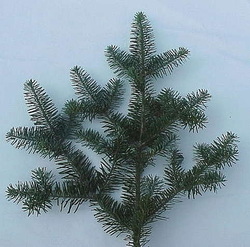
The needles grow around 2/3 of the branch with a characteristic odor. The coloration of the needles can vary greatly depending on the growing conditions. The range can go from a deep blue green, to dark green to light green. This is the most common variety of Christmas tree and its brush is the most commonly to make Christmas wreaths.
Blue Spruce
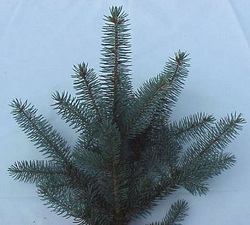
Typical light blue very sharp needles (if you brush up against it in the forest you will know it!) that grow completely around the limbs. The odor is very strong and some compare it to feline urine. The needles do not hold up well when exposed to heat. This variety of evergreen often looks the best when white lights are attached to the tree. Blue spruce makes a beautiful Christmas tree, however we would not suggest it if you have young children (due to sharp needles).
Douglas Fir
This is generally a West Coast variety of evergreen. The needles are finer than that of balsam dark green in color providing long-lasting trees and wreaths. The scent is barely noticeable.
Fraser Fir
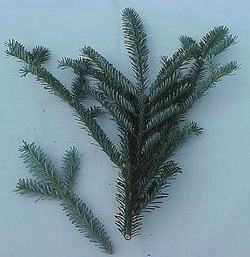
The needles grow around 2/3 of the branch with very little odor compared to a balsam fir. Branches are a beautiful green on top and silvery green on the backside of the needles. These needles tend to be a bit coarser than that found in the balsam species. Fraser fir makes beautiful long-lasting wreaths and trees that look spectacular under a combination of white and blue lights.
Hemlock
The needles are short and flat on the limb and are dark green in color. Due to the fact there is very little pitch in the needles it should not be used for interior decorations as it will dry out quickly This brush makes very nice outdoor wreaths as the fine brush makes for a very full looking wreath. Hemlock is not commonly used as a Christmas tree.
Juniper 1

There are many varieties of juniper with foliage colors ranging from blue, dark green, light green to gold. Foliage tens to be pointy and sharp with a very strong odor. Some varieities have bright red berries that are often used as decorations on wreaths. Again, makes a nice filler for centerpieces, wreaths and garlands. This is not used as a Christmas tree.
Juniper 2
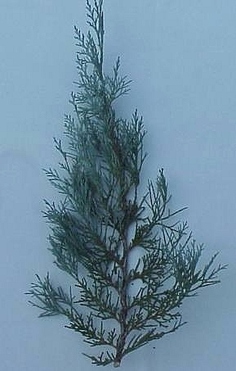
There are many varieties of juniper with foliage colors ranging from blue, dark green, light green to gold. Foliage tens to be pointy and sharp with a very strong odor. Some varieities have bright red berries that are often used as decorations on wreaths. Again, makes a nice filler for centerpieces, wreaths and garlands. This is not used as a Christmas tree.
Juniper 3

There are many varieties of juniper with foliage colors ranging from blue, dark green, light green to gold. Foliage tens to be pointy and sharp with a very strong odor. Some varieities have bright red berries that are often used as decorations on wreaths. Again, makes a nice filler for centerpieces, wreaths and garlands. This is not used as a Christmas tree.
Princess Pine
This is a low growing ground cover that is used to make garlands and wreaths. It is very soft to the touch. It has dark green foliage and dries very nicely. It should not be exposed to direct heat, although it is exceptionally easy to handle
Red (Hard) Pine
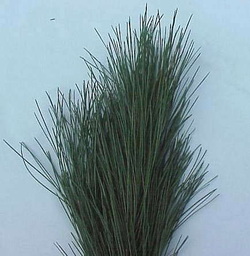
Red (Hard) Pine Cone

Red Spruce
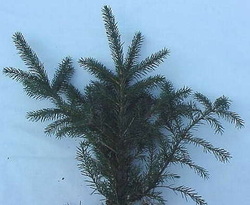
The needles grow completely around the limb and are dark green in color. As with all spruces, needles do not hold up well to heat or aging. Often these trees have small cones attached which make for a great natural decoration.
Scotch Pine
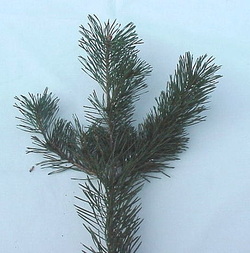
These are generally plantation trees and the needles are coarser and shorter than the white pine and hold quite well to handling and heat. If you buy a Scotch Pine tree make sure you look at the stump and make sure it is straight. Often we have found that it is very difficult to buy good Scotch Pine trees with straight butts. These trees do not naturally grow straight and have to be managed to do so. If you buy a Scotch Pine with a crooked butt it will not stand straight in the Christmas tree stand.
Spruce Cone
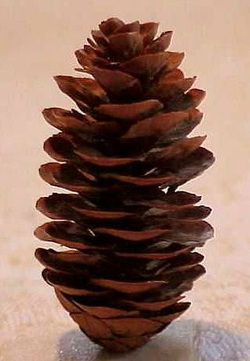
White Cedar

Flat branchy brush whose needles are light green in color. A great filler or addition to dress up a centerpiece, wreath or garland. Not commonly used as a Christmas tree.
White Pine
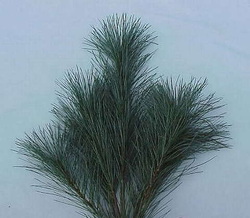
Fine long needles soft to the touch. These make nice Christmas trees but are very hard to decorate due to the fact that the branches are very limber. These trees look very nice with small white lights providing a very soft, subtle appearance. The needles hold up much better than most varieties to heat and handling.
White Pine Cone
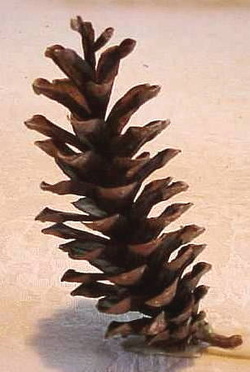
White Spruce
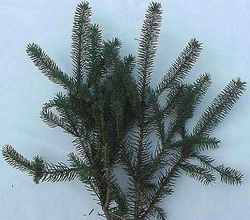
The needles grow completely around the limb with a grey green needle color. The scent is similar to that of the blue spruce. These needles do not hold up to heat and do not last very long after they are cut. Their needles are not as sharp as the blue spruce. When buying this tree try and determine how long ago they were cut, as these trees generally start to lose their needles about 10 days after they are cut.
